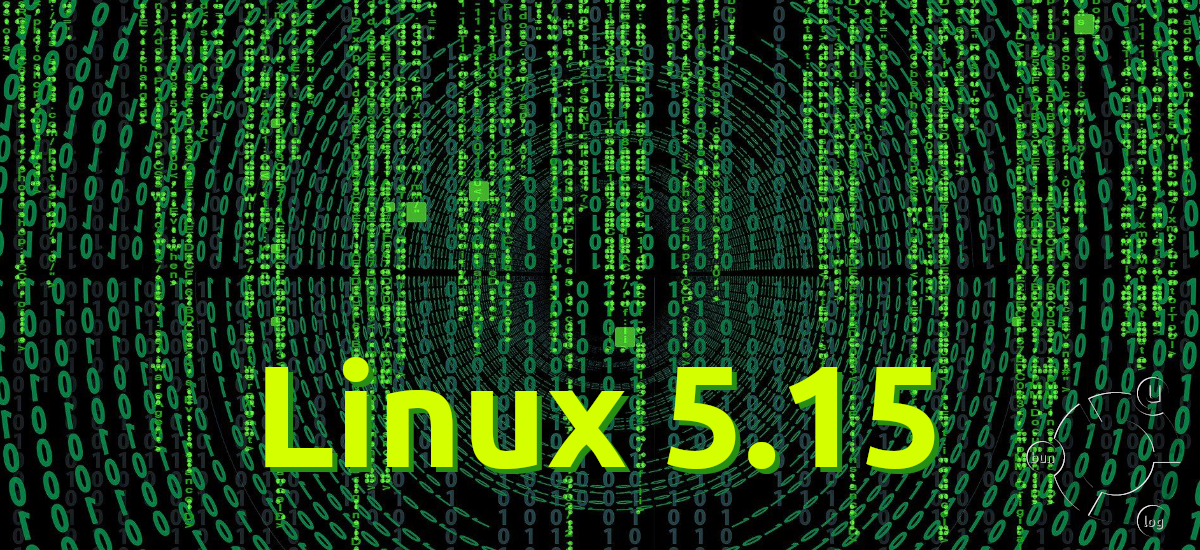
We have new version of Linux kernel. On this occasion, what we can install is Linux 5.15, the sixteenth version of the series 5 that comes with many new features. Among them, I am struck by improvements in support for NTFS, a Microsoft proprietary file system, but there are many other changes.
It is a bit surprising that the following News list (Via Phoronix) is so long, in part because Linus Torvalds said this would be a small release in terms of size. Small or not, it's the most up-to-date kernel, and will continue to be so for two weeks, when the first Linux 5.16 RC is released.
Linux 5.15 Highlights
- Processors:
- The AMD PDTDMA driver was merged after being in development for two years to benefit AMD EPYC server processors.
- Stack scrambling extension for RISC-V along with other connected features for RISC-V.
- Alder Lake support on the TCC controller.
- A major fix for AMD notebook suspend / resume that benefits multiple models.
- KVM now defaults to the new x86 TDP MMU and adds 5-level AMD SVM paging.
- Temperature monitoring for the AMD Zen 3 APU is finally available.
- Support for temperature monitoring of the Yellow Carp APU.
- The AMD SB-RMI driver was merged to benefit servers with use cases such as the Linux-based OpenBMC software stack.
- C3 input handling has been optimized for AMD CPUs.
- Some improvements to the IRQ kernel code to benefit Intel 486 era hardware.
- An SM4 encryption implementation optimized for AVX2.
- Graphics:
- Many new RDNA2 PCI IDs that point to a possible upgrade to RDNA2 graphics cards.
- AMD Cyan Skillfish graphics support.
- Initial support for Intel XeHP and DG2 / Alchemist discrete graphics.
- Removal of Intel Gen10 / Cannon Lake graphics support.
- Many other graphical improvements between DRM / KMS drivers.
- Storage / File Systems:
- The new NTFS driver was merged, a great improvement over the existing NTFS driver. This new driver is the "NTFS3" created by Paragon Software.
- Samsung's KSMBD was merged as an SMB3 file server into the kernel.
- OverlayFS has better performance and copies more attributes.
- FUSE now allows mounting an active device.
- Performance optimizations for F2FS.
- Shared connection across multiple NICs with NFS client code.
- New optimizations for EXT4.
- Many improvements for XFS.
- Degraded RAID mode support for Btrfs and performance improvements.
- Btrfs support for IDMAPPED mounts and Btrfs FS-VERITY support.
- Linux 5.15 I / O can achieve up to ~ 3.5M IOPS per core.
- Support for a global county / disk sequence number for disk events, requested by systemd developers.
- Removal of the LightNVM subsystem.
- Linux floppy driver code fix.
- Other changes in the block subsystem.
- Other hardware:
- Various Havana Labs AI Accelerator Driver Updates.
- Working Ethernet for OpenRISC when using FPGA LiteX configurations.
- ASUS ACPI Platform Profile support.
- ASUS WMI handling improvements around eGPU handling, dGPU disabling, and panel overdrive capabilities.
- High resolution scrolling for the Apple Magic Mouse.
- The Apple M1 IOMMU driver has been merged as an important step for the commissioning of more Apple M1 SoC components on Linux.
- Added support for NVIDIA Jetson TX2 NX and other new ARM boards / platforms.
- The AMD Van Gogh APU audio driver has been added for the new AMD ACP5x audio coprocessor.
- A new Realtek RTL8188EU WiFi controller to replace your existing controller code.
- Support for the next generation of Intel "Bz" WiFi hardware.
- Another water cooling pump sensor controller.
- Intel has also added wired networking support for its Lunar Lake platform to the e1000e controller.
- Support for reading the Nintendo OTP memory area.
- Arm's SMCCC TRNG driver has been added.
- Cirrus Logic Dolphin audio support.
- General kernel activity:
- The PREEMPT_RT lock code was merged as a big step towards obtaining real-time (RT) patches in the Linux kernel.
- Amazon's DAMON landed for a data access monitoring framework that can be used for proactive memory reclamation and other features.
- Adaptation of the SLUB code to be compatible with RT.
- Introduction of VDUSE for vDPA devices in user space.
- A short-lived change made by Linus Torvalds himself was to enable -Werror by default for all kernel builds, but after only a few days it was changed to only enable -Werror for test builds.
- Better handling during memory reclamation for servers with multiple memory tiers.
- New process_mrelease system call to more quickly free memory from a dying process.
- Fixed a scalability issue that caused very long boot times on large IBM servers that took up to more than 30 minutes to boot.
- Various improvements to the scheduler.
- Various improvements in energy management.
- Support for BPF timers and support for the MCTP protocol are some of the changes in the network.
- Safety:
- Option to flush L1 data cache on context switch as a safety feature for paranoid and other specialized conditions.
- Buffer overflow detection improvements at compile and run time.
- Additional protection against side channel attacks by cleaning used registers before returning, making use of compiler support.
- IMA-based measurement support for device mapper code.
Already available, but not by default in Ubuntu
Linux 5.15 It is now available officially, but those who want to install it in Ubuntu they will have to do the manual installation. Also, its maintainer will not recommend mass adoption until they release the first Linux 5.15 maintenance update.